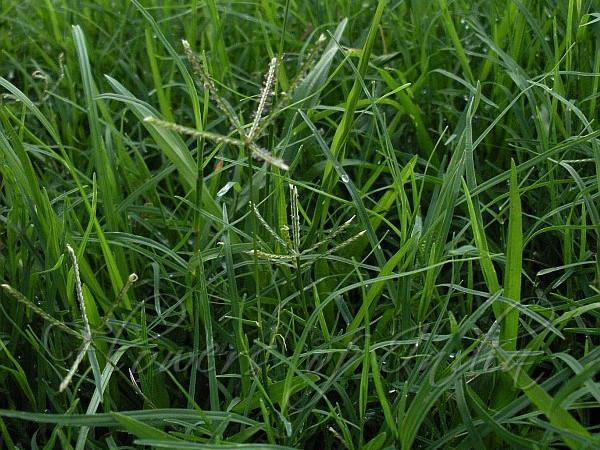|
| Common Lawn Grass |
|

|

| File size | 166547 |
| Original date | 7/2/12 5:55 PM |
| Resolution | 600 x 800 |
| Flash | Flash did not fire, auto |
| Focal length | 6.3mm |
| Exposure time | 1/61s |
| Aperture | 3.5 |
| Focus Distance | |
| Metering Mode | Multi-segment |
| Camera make | NIKON |
| Camera model | COOLPIX S550 |
| Sensor type |
|
|
|
|
Photo: |
Botanical name: Cynodon dactylon Family: Poaceae (Grass family)
Common Lawn Grass is a grass native to north Africa, Asia and Australia and
southern Europe. The name "Bermuda Grass" derives from its abundance as an
invasive species on Bermuda; it does not occur naturally there. The blades
are a grey-green colour and are short, usually 4-15 cm long with rough
edges. The erect stems can grow 1-30 cm, rarely to 3 ft, tall. The stems
are slightly flattened, often tinged purple in color. The seed heads are
produced in a cluster of 3–7 spikes (rarely two) together at the top of
the stem, each spike 3–6 cm long. It has a deep root system. In drought
situations with penetrable soil, the root system can grow to over 2 m
deep, though most of the root mass is less than 60 cm under the surface.
The grass creeps along the ground and root wherever a node touches the
ground, forming a dense mat. Common Lawn Grass reproduces through seeds,
through runners and rhizomes.
Medicinal uses: It is used as a traditional herb in Ayurvedic medicine. Fresh plant
juice/paste is good for local application on fresh cuts and injuries
to stop bleeding. Root decoction is given in dropsy and secondary
syphilis. Plant juice mixed with honey is given in diabetes. Rhizome is
used in urinary disorder.
It is used as a traditional herb in Ayurvedic medicine. Fresh plant
juice/paste is good for local application on fresh cuts and injuries
to stop bleeding. Root decoction is given in dropsy and secondary
syphilis. Plant juice mixed with honey is given in diabetes. Rhizome is
used in urinary disorder.
Medicinal uses:
 It is used as a traditional herb in Ayurvedic medicine. Fresh plant
juice/paste is good for local application on fresh cuts and injuries
to stop bleeding. Root decoction is given in dropsy and secondary
syphilis. Plant juice mixed with honey is given in diabetes. Rhizome is
used in urinary disorder.
It is used as a traditional herb in Ayurvedic medicine. Fresh plant
juice/paste is good for local application on fresh cuts and injuries
to stop bleeding. Root decoction is given in dropsy and secondary
syphilis. Plant juice mixed with honey is given in diabetes. Rhizome is
used in urinary disorder.
| Identification credit: Gurcharan Singh | Photographed in Hooghly & Delhi. |
• Is this flower misidentified? If yes,